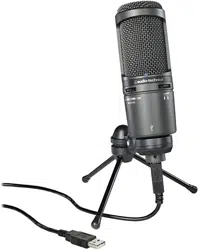Loading ...
Loading ...
Loading ...

10
Additional Information
Using headphones
Warning: Turn the volume control down before using the headphones.
The
1
/
8
" (3.5 mm) headphone jack on the rear of the microphone allows you to directly monitor your
recording without the delay that occurs when monitoring through your computer’s headphone output.
When your preliminary setup is completed, and your USB microphone is connected to your computer’s
USB port (the microphone’s blue LED is illuminated), plug your headphones into the headphone jack
on the rear of the microphone. While talking into the microphone, you should hear yourself in the
headphones. (If Mix Control is set on COM you may not be able to hear yourself. Set Mix Control
between COM and MIC to assure you will be able to hear live audio through your headphones.)
Adjust the volume by rotating the Headphone Level Control dial on the front of the microphone.
Note: The Headphone Level Control dial only adjusts the volume of the mic’s headphone output; it
does not adjust the microphone level.
Note: The AT2020USB
+
is equipped with a high-output internal headphone amplifier that provides
superior clarity and musical detail as well as more volume overall.
Using Mix Control
The AT2020USB
+
allows you to monitor previously recorded tracks while recording new audio. Adjust
the Mix Control to balance levels of live audio from your microphone and pre-recorded audio on your
computer. Turn the Mix Control dial towards COM (computer) to hear more pre-recorded audio; turn
the dial towards MIC (microphone) to hear more of your voice or instrument in the mix.
Selecting software
You have many choices in recording software. Audacity, available for free online at
http://audacity.sourceforge.net/, is a widely used software program that provides basic recording software.
Setting your software levels
Correct adjustment of microphone level is important for optimum performance. Ideally, the microphone
level should be as high as possible without overloading the input of your computer. If you hear
distortion, or if your recording program shows levels that are consistently overloaded (at peak levels),
turn the microphone volume (or level) down, either through your control panel (or system preferences)
settings, or through your recording software. If your recording program shows insufficient level, you
can increase the microphone gain either from the control panel (or system preferences) settings or
through your recording program.
No further microphone level adjustments should be needed, as long as the acoustic input does not
change significantly.
Positioning your microphone
It is important to position the microphone directly in line (on axis) with the person speaking/ singing or
instrument (or other sound source) to achieve the best frequency response of the microphone.
For use in speaking/singing applications, the ideal placement for the microphone is directly in front of
the person speaking/singing. The same placement is optimal when miking an instrument such as an
acoustic guitar, drums or piano. Experiment with different mic placements to find the best sound for
your particular setup.
Protecting your microphone
Avoid leaving your microphone in the open sun or in areas where temperatures exceed 110° F (43° C)
for extended periods. Extremely high humidity should also be avoided.
Loading ...
Loading ...
